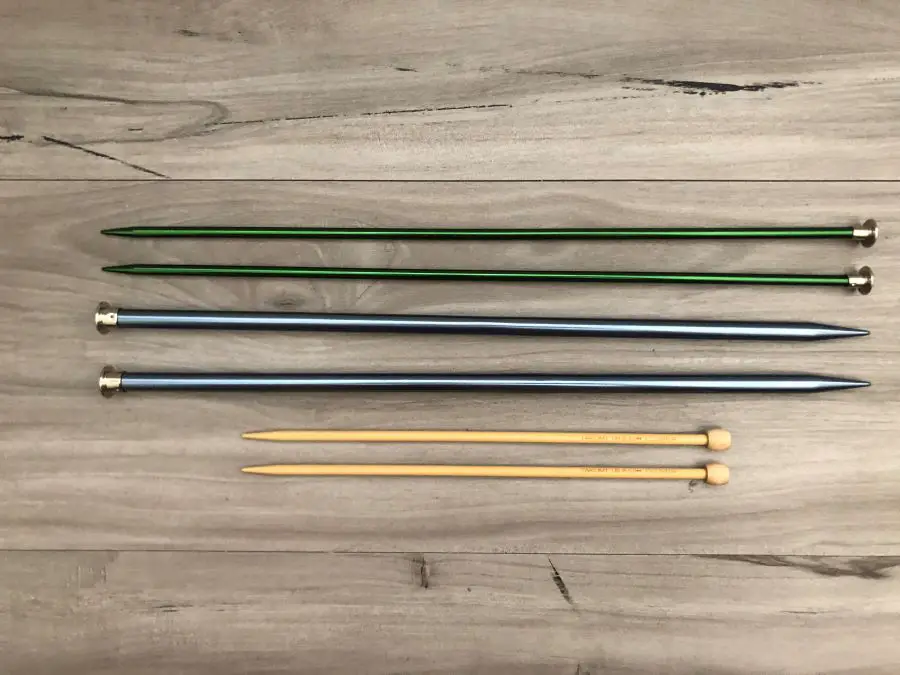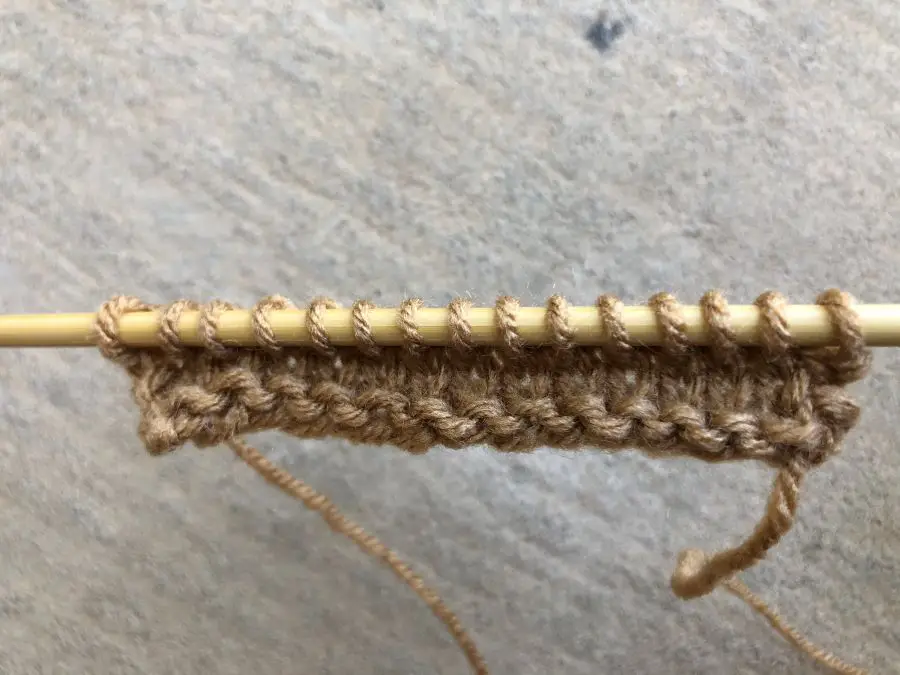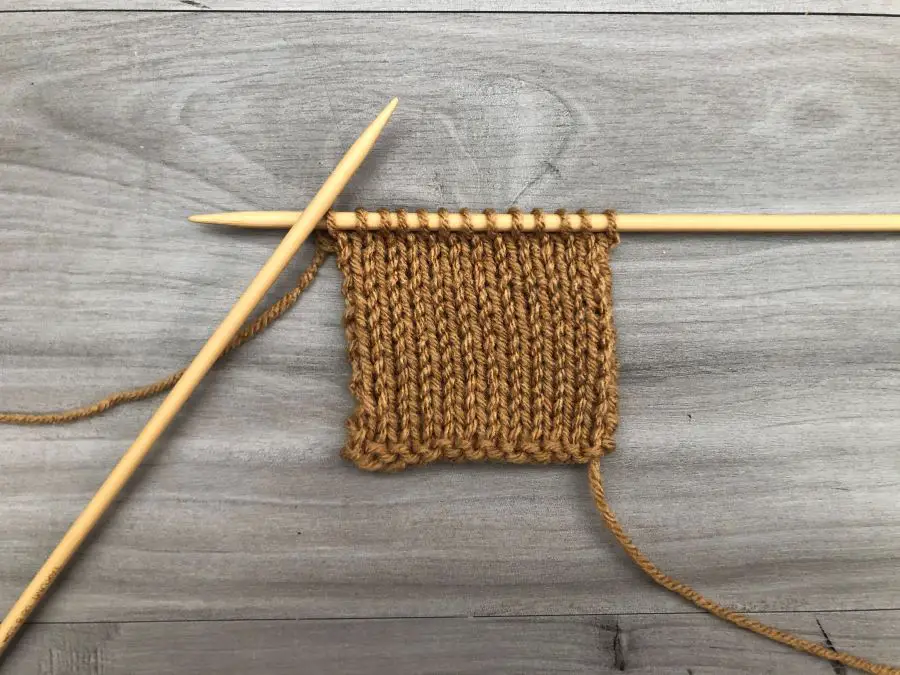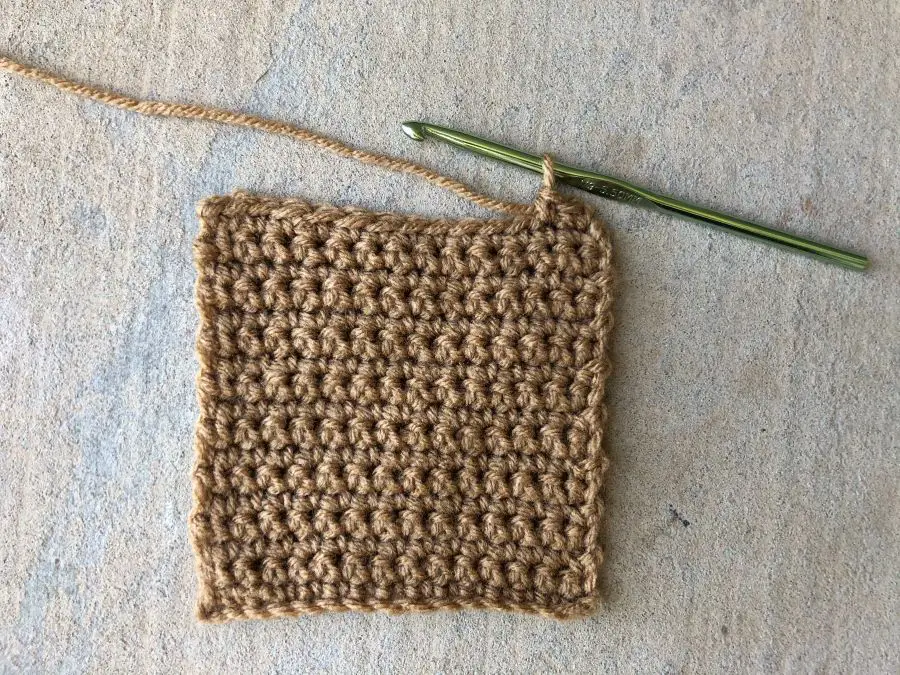The other day I was crocheting a cardigan at my parent’s house. My dad walked in and asked, “what are you knitting?” I respectfully answered, but also briefly educated him on the difference between knitting and crochet.
What is the difference? The most fundamental difference between knitting and crochet are the tools. Knitting requires the use of two needles, while crochet utilizes a hook. Knitting creates loops which are kept on the needles and transferred back and forth. Crochet uses the hook to create loops one at a time.
All too often individuals who are unfamiliar with needle crafts get knitting and crochet confused. Those individuals were the inspiration for this post. However, if you are new to needle crafts or know how to only do one method, this is for you too. I hope it inspires you to pick up a set of needles or a hook and start a project!
Knit Vs. Crochet Tools and Materials
The tools and materials for knit or crochet projects is minimal, and they don’t differ that much.
Crochet
- Crochet hooks
- Yarn
- Scissors
- Tapestry needle
*optional
Knitting
- Knitting needles
- Yarn
- Scissors
- Tapestry needle
- Crochet hook*
Let’s dive into each category more deeply.
Crochet Hooks

A crochet hook is a rod that fits in your hand with a hook at one end. It is roughly the size of a pencil.
A crochet hook can be made out of aluminum, plastic, or wood. Any of these can be combined as well. A popular combination is a metal crochet hook with a synthetic handle for a more ergonomic design.
Crochet hooks come in a variety of sizes. According to the Craft Yarn Council, there are hooks ranging from 2.25 mm to 30 mm.
While on the subject of crochet hooks, these are also listed as materials needed for knitting. This is because if you mess up and drop a stitch, a crochet hook can easily correct that mistake.
Knitting Needles

Knitting needles can come in a variety of shapes and sizes. The Craft Yarn Council also has a range of knitting needles that go from 1.5 mm – 35 mm. That size relates to the circumference of the needle. The lengths are also different. Some are 7 inches long, while others are 40 inches.
The material that knitting needles are usually made of include aluminum, wood, bamboo and plastic.
Straight needles. Knitting needles that are long and straight with pointed ends and flat blunt tops.
Circular needles. The tips of the needles are pointed and extend a few inches until they are connected by a flexible piece of plastic.
Double pointed needles. As the name suggests, these type of needles are pointed at both ends. They usually come in a set of five.
Yarn
Any type of yarn or fiber is viable for a crochet or knit project. The only exception is thread.
Thread is typically reserved for crochet projects because it is too fine for knitting needles. A small crochet hook is sufficient, but the thread will slide off of small knitting needles.
Knit Vs. Crochet Methods
Besides the tools, the other major difference between knitting and crocheting is the way in which fabric is created.
Knitting
Let’s start with knitting. When a project is hand knitted, loops are initially created on one needle. The same loops are then transferred back and forth from needle to needle until the desired length and shape are achieved. The needles are dependent on each other to make the stitches. The technique will always be the same no matter what kind of knitting needle you use. Take a look at the example I created below.

What happens if you get interrupted and must stop halfway through a row? This would mean loops are on both needles. That is why there is such a thing as needle stoppers that secure to the pointed ends to keep stitches from falling off.
Knitting can also be done on a loom. This requires a type of frame that has pegs evenly spread throughout the top. Two sets of loops are held up by the pegs and the bottom loop passes over the top to create a knitted fabric.
There is also such a thing as machine knitting. This is how T-shirts and the like are knitted for commercial purposes. Items can be knitted large scale and quickly on these types of knitting machines.
Crochet
Crochet, as we already established uses only one hook. Crochet hooks pull yarn loops through the project one stitch at a time. There is no need to transfer stitches anywhere. Once the hook creates a stitch, it is secure to the project. I hope the picture below helps describe the process for you.

Unlike the many variations of knitting, crochet can only be done by hand. This makes crochet unique.
If you must stop crocheting for some reason, the hook does not have to remain in the loop. This is different than knitting. You can use a stitch marker on the last loop which will keep the stitches from unravelling. Or you can pull the loop loose quite a bit so there is room for the yarn to pull without undoing stitches.
Knit Vs. Crochet Fabric Structure
Stitch patterns of crochet and knit fabrics look much different. But to an untrained eye, they may look the same. Here are the major differences to the structure of knit and crochet fabrics.
Crochet
- Stitches resemble knots
- Boxier, square like stitches
- Sturdy fabric
Knit
- “V” shaped stitches
- Lightweight
- Stretchy fabric
Knit Fabric
When knitting, each stitch on the needle requires support from the one below it. If a stitch drops off the needle, it is possible for an entire column to unravel. Take a look at the closeup of a knitting project that I am working on. Notice the stitches look like upside down “v’s”.

Crochet Fabric
Crochet is different. Each stitch is supported by the one next to it. The only way for a crochet item to unravel is for the stitch next to it to come apart. Take a look at the photo below to see the type of fabric that crochet creates. Notice how much different these stitches look than knit stitches. They are much boxier and bigger.

Another structural difference is the size of stitches. If you were to use the same type of yarn to crochet and knit a swatch, you would find that knit stitches are smaller than crochet stitches. Not sure why, just a fact.
Correcting Mistakes for Knitting and Crochet
Unfortunately, mistakes are impossible to avoid. No matter how hard you try to, there will always be a point when you realize you messed up. The way you handle the mistakes is different for crochet and knit.
Fixing Knitting Mistakes
When knitting, the most common mistake is dropping a stitch. That means that in the process of transferring loops from one needle to the other, a stitch did not make it onto the needle. To correct a mistake like this, all you do is grab a crochet hook and pull the yarn back up to the needle. If it fell down more than one stitch, the crochet hook comes in handy for looping the dropped stitch back to the row being worked.
Any other knitting mistake will require some sort of backtracking. This should be done carefully to prevent further error. Stitches must be transferred onto the previous needle up until the problem. Then correct the problem and knit as normal.
For a visual of what I am talking about, I found a video on YouTube that covers three ways that knitting mistakes can be fixed. By mistakes, I mean the common one of dropping a stitch. I hope you find this insightful.
Fixing Crochet Mistakes
Whether your row has the wrong number of stitches or you accidentally made the wrong type of stitch, the way of correcting the mistake is the same. All you do is identify the problem area. Then undo the yarn until you reach that specific part. Then you can correct your mistake and move forward. Much easier than correcting a knitting mistake, in my opinion.
Conclusion
Both crochet and knitting have much in common. They both use the same type yarn/fibers. Patterns are worked using similar abbreviations. The same sort of projects can be completed. And they both offer an assortment of health benefits.
But fundamentally, knitting and crochet are completely different. Two needles are used to create lightweight, stretchy knit fabrics. And different size and length needles are needed to create different types of projects.
Whereas, crochet utilizes one hook that arranges knots into a beautiful pattern. Crochet also tends to work up faster, and is easier to correct mistakes.
Related Questions
Should I learn to knit or crochet? You should choose based on your personal preference, but consider these points. Knitting requires two needles, coordination, and extra patience when getting started. Crochet requires one hook, and a hand to hold the project and hand to hold the hook. More sophisticated designs exist for knitting, but crochet works up faster.
Which uses more yarn crochet or knitting? The jury is still out on this one. It has not ever been proven that crochet or knitting uses more yarn. This will vary from person to person.
